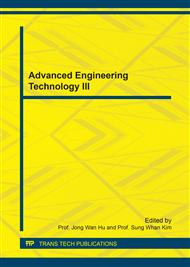p.442
p.450
p.457
p.463
p.468
p.474
p.480
p.486
p.492
Thermal State of Implantable Mechatronic Unit for Pulsative Total Artificial Heart
Abstract:
One of the important problems of implantable artificial heart systems development is ensuring of their continuous work during of all time of implantation in the limited heat transfer conditions. Temperature of the mechatronic unit housing shouldn't exceed forty degrees Celsius, and the overheating to forty-two degrees Celsius is admissible only in short-time modes. For the solution of this problem the numerical simulations of a thermal condition of implantable part of artificial heart mechatronic unit was carried out and based on results of the solution of a stationary task of heat conductivity. For the solution a stationary task of heat conductivity the finite-element analysis system ANSYS Workbench was used. The Finite-element model parameters are the following: number of nodes 642263 nodes, number of hexahedral finite-elements 363231, average length of the rib 1mm. Modeling was carried out for various power of thermal losses: 5, 8, 10 watts for which thermal stream density are 1500, 2400 and 3000 watts per square meter, respectively. The increasing of power of thermal losses from 5 to 10 watts increases the maximum temperature of surface of the mechatronic unit housing by only 6 degrees from thirty-three to thirty-nine degrees Celsius. The carried-out simulation of the established thermal state at various power of thermal losses showed lack of an overheat of a surface of the mechatronic unit housing above critical temperature during the continuous work for a long time and principle possibility of application of the developed design as implantable system.
Info:
Periodical:
Pages:
468-473
Citation:
Online since:
June 2017
Authors:
Price:
Сopyright:
© 2017 Trans Tech Publications Ltd. All Rights Reserved
Share:
Citation:


